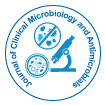

Perspective - (2023)Volume 7, Issue 2
Viruses are microscopic, non-living infectious agents that exist in a realm between living organisms and chemicals. These minuscule particles have intrigued scientists for centuries, as their unique structure, behavior, and ability to infect living cells have profound implications for human health, ecology, and even evolutionary biology. Exploring their structure, replication mechanisms, diversity, and the impact they have on various aspects of life.
Structure and replication
The genetic material that makes up viruses is either DNA or RNA, and it is protected by a protein covering known as a capsid. Some viruses, such as bacteriophages, also possess a tail and tail fibers that aid in attaching to host cells [1]. However, viruses lack the cellular machinery necessary for replication and are completely dependent on host cells to reproduce. The infection process begins with the attachment of the virus to specific receptors on the host cell's surface, followed by the injection of their genetic material into the cell [2]. Once inside, the viral genetic material hijacks the host cell's machinery, compelling it to produce viral proteins and replicate the viral genome. Eventually, the newly formed viruses are released from the infected cell, either by cell lysis or budding, to infect neighboring cells and continue the cycle.
Diversity and classification
Viruses exhibit a staggering diversity, infecting organisms ranging from bacteria to plants, animals, and even other viruses. They are classified into different groups based on various factors, including their genetic material, structure, mode of replication, and host range. For instance, the Baltimore classification system categorizes viruses into seven groups (I to VII) based on their genetic material and method of replication [3]. This classification encompasses viruses with single-stranded DNA, double-stranded DNA, positive-sense single-stranded RNA, negative-sense single-stranded RNA, double-stranded RNA, reverse transcribing RNA, and reverse transcribing DNA genomes. Furthermore, viruses are also classified into families, genera, and species based on shared characteristics and evolutionary relationships.
Impact on human health
Viruses have a significant impact on human health, causing a wide range of diseases, from the common cold and influenza to more severe conditions like HIV/AIDS, Ebola, and COVID-19. Their ability to rapidly evolve and adapt to new hosts or environmental conditions poses ongoing challenges for public health [4]. Vaccines, antiviral drugs, and public health measures such as hygiene practices and quarantine have become crucial in controlling viral infections and reducing their impact [5].
Viruses in ecology
Viruses play critical roles in ecological processes. For instance, they shape marine ecosystems by infecting and lysing bacteria, controlling their abundance and diversity [6-10]. Viral infections can also influence the population dynamics of other microorganisms, including phytoplankton and protozoa, which in turn affects nutrient cycling and carbon fixation in aquatic environments. Moreover, viruses have been found to modulate the interactions between hosts and their associated microbiomes, impacting the overall health and functioning of ecosystems.
Viruses, despite their small size, have a significant impact on various aspects of life on Earth. Their unique structure, replication strategies, and remarkable diversity have fascinated scientists for centuries. From causing human diseases to driving ecological processes, viruses have shaped the course of evolution and continue to challenge our understanding of life itself. Ability to prevent and combat viral infections, better comprehend the intricate web of life, and potentially harness the power of viruses for beneficial purposes such as gene therapy and biotechnology.
[Cross ref] [Google Scholar] [PubMed]
[Cross ref] [Google Scholar] [PubMed]
[Cross ref] [Google Scholar] [PubMed]
[Cross ref] [Google Scholar] [PubMed]
[Cross ref] [Google Scholar] [PubMed]
[Cross ref] [Google Scholar] [PubMed]
[Cross ref] [Google Scholar] [PubMed]
[Cross ref] [Google Scholar] [PubMed]
[Cross ref] [Google Scholar] [PubMed]
[Cross ref] [Google Scholar] [PubMed]
Citation: Pritt CS (2023) Department of Pathology and Laboratory Medicine, Emory University, Atlanta, USA. 7:162.
Received: 01-Jun-2023, Manuscript No. JCMA-23-25530; Editor assigned: 05-Jun-2023, Pre QC No. JCMA-23-25530 (PQ); Reviewed: 19-Jun-2023, QC No. JCMA-23-25530; Revised: 27-Jun-2023, Manuscript No. JCMA-23-25530 (R); Published: 05-Jul-2023 , DOI: 10.35248/JCMA.23.7.162
Copyright: © 2023 Pritt CS. This is an open-access article distributed under the terms of the Creative Commons Attribution License, which permits unrestricted use, distribution, and reproduction in any medium, provided the original author and source are credited.